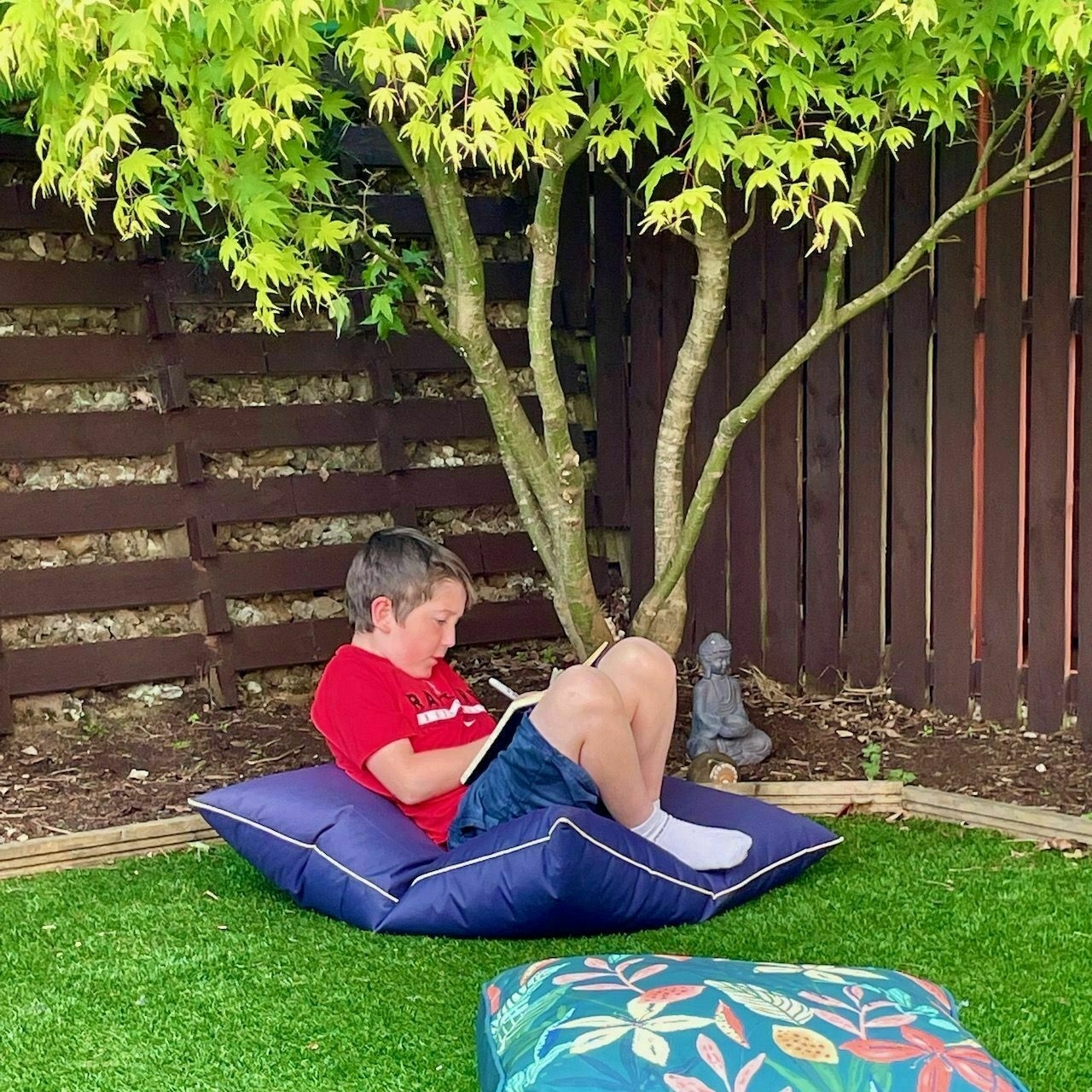The latest release from Field Notes looks great. Although I’m not a North American resident in the area of the great lakes, I’ve spent a number of summers at my in-laws home off Lake Ontario to appreciate them.
150th Open Practice Day
Today we headed up to St Andrews to see some golf at the final practice day of the week before the 1st rounds begin tomorrow. After an early start, and a couple of hours of driving, we finally arrived. Blue skies and a strong wind featured for most of the day.

After spending some cash on a few goodies at the store, we headed over to the practice area and watched some of the players putting and pitching. Drew managed to get a few signatures from some of the professionals, but he was chuffed to bits with his signed golf ball from the world’s top ranked amateur, Keita Nakajima.
Finally, we spent some time in the stands watching players coming through the 16th and 17th holes.
It was a great day and I’m glad to say we’re heading back up on Sunday to do it all again!
A great ending to Kenobi
I watched the final episode of Star Wars: Obi-Wan Kenobi last night and I have to say it was a great ending to a fantastic series.
I had so many questions about how this series would pan out. If Obi-Wan and Leia meet, why doesn’t she remember? Surely Obi-Wan and Darth Vader can’t have an epic lightsaber battle? These questions and the many more I had were thankfully answered in a number of different ways, but didn’t lead to a major plot hole between this a A New Hop. Obi-Wan’s final episode was a great finish to the series and for one scene in particular, it’s definitely worth the wait.
Ewan McGregor reprising his role as Obi-Wan was always going to be a good choice, but it was Vivien Lyra Blair who played Leia who really stole the show for me. Moses Ingram who played Inquisitor Reva was also great, a more complicated character than you might first assume.
Will there be more from Kenobi? I don’t know. I would be quite happy if they left the show as it finished. There is one story that I would like to see more of, but I don’t want to give the ending away, so you’ll just need to watch it.
And about that missing Star Destroyer in the final episode. Maybe on the other side of the planet?
After almost two and a half years without catching Covid, it finally got me. I tested positive this morning. The real challenge is now keeping a safe distance from Ethan so that it doesn’t impact his golf competition next week.
Stumbled across this collection of Pocket’s recommended long reads for the last ten years. Quite a few I’ve read and a few I haven’t. Definitely worth a read.
My turn to drop off the wee yin at school this morning. Can’t wait to see what tunes he picks for the car ride to school. His musical likes involve Coldplay, Bob Seger, Eminem, David Bowie and 10cc. Glad to see me and Jen’s preference for all music rubbing off on him.
Thoroughly enjoyed Hustle on Netflix tonight. Superb movie and something a bit different.
Building a single page admin section
I’m currently following through the hotrails.dev tutorial series so that I can build an admin section for the Writeabout website.
For too long, I’ve just updated Writeabout’s prompts using the Rails console, which is fine. Using a web interface, though, would make it a bit easier for me to add prompts.
The Last of Us Part 1 Remake Trailer
My favourite game of all time has been polished up for the PS5 and will also soon be released on the PC as well. This might just fill in the gap before the HBO series begins.
Finding the path again
Over the last couple of months, I’ve started to make some progress on many of the habits that I fell away from a few years ago. I’m reading again, I’m working on more side projects, and I’m starting to find myself blogging more again. Feels good that I have found my path again. I hope that it continues.
Black Adam Trailer
Shazam was an unexpected DC favourite in the Lang household. I think Black Adam will be another DC favourite for us.
The Nowhere Man
Professor Chris Painter at The Byline Times digs into the lack of direction that the United Kingdom finds itself in under its Prime Minister, Boris Johnson.
Nothing has changed; everything has changed. Following Monday’s vote of confidence, Boris Johnson staggers on, for now. The lyrics from the famous 1960s Beatles track even more perfectly encapsulate, through popular culture, the state of his failing premiership: “He’s a real nowhere man, sitting in his nowhere land, making all his nowhere plans for nobody, doesn’t have a point of view, knows not where he’s going to.”
— Boris Johnson: Nowhere Man by Professor Chris Painter
I didn’t think there would be enough votes on Monday to trigger a leadership contest for the Conservatives. Still, I was somewhat taken aback by the number of politicians who voted against Boris Johnson. The Conservatives have never been a party favoured by myself. Although, it is refreshing to see that there are members of the Conservative party who are willing to take some form of action.
It is hard to conceive of anything that will heal Johnson’s fundamental breach of trust with the public, no matter how many ministers he reshuffles. Already saved twice, first by COVID vaccines and then by the situation in Ukraine, he descends into ever deeper trouble.
— Boris Johnson: Nowhere Man by Professor Chris Painter
While there are plenty of indicators that the UK public is fed up with Johnson’s antics, the only real test of the public’s trust in Johnson is a general election. And the conservatives aren’t going to call a general election early unless they absolutely have to.
Twenty years ago, Boris might have gotten away with continuing on and ignoring the public’s views. Still, there’s no escaping the scrutiny of the people for those in power. With a more connected world than ever before, there are very few ways leaders can hide the ugly truth. I hope that, in time, the world starts to see a change in those that undertake a career in politics. Perhaps those coming into politics will have more tremendous respect for the connected world and commit to doing a more respectful job of governing than Johnson and others.
Lots to like from Apple’s WWDC event, but the MacBook Air definitely caught my eye. Might just be my next laptop to replace my ageing MacBook Pro.
So, Boris Johnson survives again. “Move on” seems to be the Tory favoured response to the media after the no-confidence vote. Roll on the next general election.
Channeling his inner artist
The wee guy channeling his inner artist in the corner of the garden this afternoon.

Down at Turnberry
Walking round the peripheral of the Trump Turnberry course while Ethan plays his county match. Such a beautiful part of the world.

A bug or a lack of understanding?
This morning I finally resovled an issue with a Rails application of mine.
After a couple of weeks, of getting an hour every other night to resovle this, I finally understood what the problem was and how it could be fixed. A bug? Not necessarily, it was more of a lack of understanding on my part. The issue is fixed now and I can now crack on with other elements of the application.
Deer on the 11th tee
There I was waiting on the final match tonight when I noticed a nice bit of light through the trees from the 11th tee. It wasn’t until I got home and I realised I captured a deer almost in the middle of the shot.

A study shows that full absenteeism from social media is good for you.
Digital Minimalism and Deep Work author Cal Newport, highlights a new paper shows that taking a prolonged and full break is good for you.
The researchers further found that they could obtain smaller, but still significant improvements in depression and anxiety by having users simply reduce the time they spend on Twitter and TikTok. The biggest effects, however, came from full abstention.
— Taking a Break from Social Media Makes you Happier and Less Anxious
This is something that I need to do more often. The endless scrolling is a terrible habit of mine. When this happens, I sometimes start to sense that feeling of negativeness creeping in as I am scrolling. At this point I just put my phone down and find something else to do. Maybe I should just delete the Twitter app from my phone?
I’m on board with Kurt on this one. Money spent on books and music is never wasted. Although I do admit that it’s been a while since I actually purchased music outside of a streaming service.
Good advice from Kurt Harden on how to salvage the day when your plans end up changing.
Hey, 37signals is back!
Nice reminder by Shawn Blanc that the quality of question matters.
Signed up for the free plan on MDN Plus this morning. I’m not convinced that I need either of the paid plans yet, but I might change my mind after a few weeks of using it.
How I am using different tools and themes to seperate my work from my home.
It’s always good to use good tools for the job. In my case, I’m back to using a Macbook Pro and macOS as my development machine and operating system. It’s also great that I am working with Ruby and Rails once again.
The downside to using the tools is that they are the same tools I use to write web applications in my spare time. I enjoy hacking on ideas for web applications and using them for my own use, but I’ve noticed that the lines have started to blur when I use other tools.
Take for instance, source code management. I’m now using the same source code management tool for both work and my own projects. With source code management being a big part of my workday, I don’t enjoy using it the same way now for my own projects.
If I’m to continue enjoying hacking on my code after then, I want it to be an enjoyable experience. While I have no complaints about my job, it’s not a part of the day I want reminded of when it’s the evening or the weekend. I’ve been exploring different options for source code management over the last couple of weeks. I have decided to try out Gitlab for this over the next few months. It’s free, has similar processes to my current source code management tool, and integrates well with the hosting company I use for my web apps.
I’m also looking into other ways of using different tools or using the same tools differently. iTerm and Visual Studio Code are two tools that I use both at work and at home but finding alternatives to these is tricky when I use these tools really well. So instead of changing these tools to something else, I’m just changing how these tools look.
For iTerm, I have different looking terminals for work and home. It’s not much of a change, but the look definitely changes the dynamic of being at work and being at home.
I’ve also done the same with Visual Studio Code. I’m not going to look for a new text editor when I already use this quite proficiently. Instead, I am using the toggle extension in Visual Studio Code to change the theme and font settings for when I am at work and when I am home. A simple keyboard shortcut is now all it takes for me to change my interface from work to home.
Setting these boundaries between these contexts is essential as it creates a space for both. While I use many of the same tools, I do like to feel that I am in the correct mindset at the right time. That means using the appropriate tools for each and being able to distinguish between each. If the same tool has to be used for both, then a simple change of how that tool looks is all it takes for me to determine which context I am in.